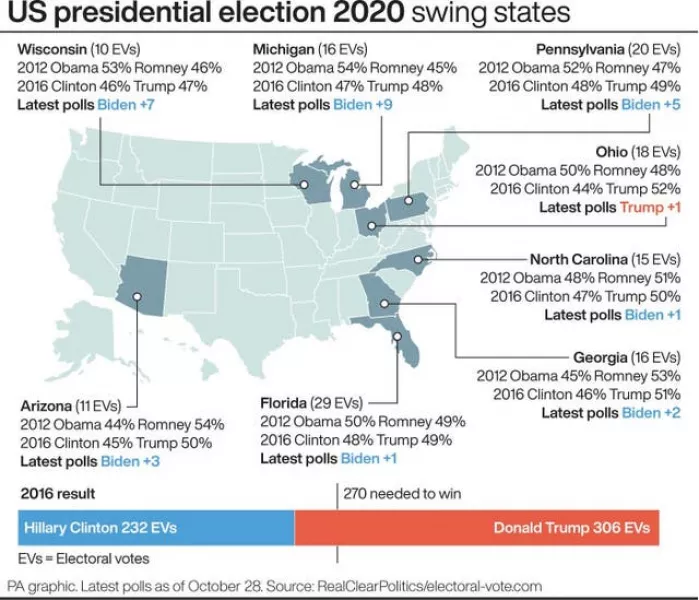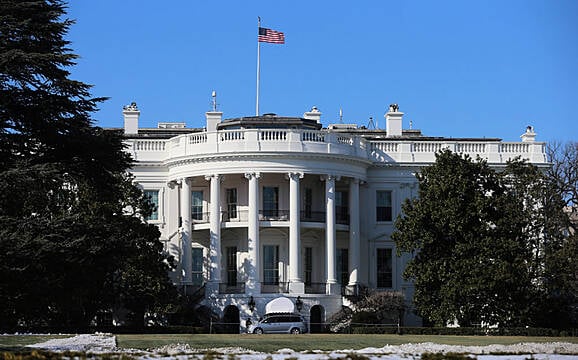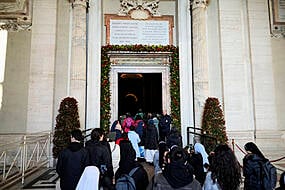Instead, the nation relies on the “electoral college” system of converting votes into power – and its quirks have meant two of the last three presidents have entered the White House with fewer votes from the public than their opponents.
Understanding its complexities will be key to following the contest between Donald Trump and Joe Biden on November 3rd.
How does it all work?
Technically, when Americans cast their vote they are voting for a group of party-appointed officials who have pledged to back their presidential, and vice-presidential, candidate. They form the electoral college.
Each state has – roughly speaking – a number of electors comparable to their population and the figure equals the total number of congress members and senators.
California has the most, with 55, but sparsely populated states such as Wyoming, Alaska and North Dakota get a minimum of three, as does Washington DC. This causes a controversial disparity.
There are 538 electors in total, meaning the crucial number to get a majority and enter the White House is 270.
The college meets a few weeks after election day to confirm the presidency.
Does the winner take it all?
Most states give all their electoral college votes to the candidate who won the popular vote in that state. So that means Texas, for instance, awards all 38 of its votes to one candidate even if they scrape through on 51 per cent of the vote.
This is, in part, why campaigns focus so vehemently on key swing states rather than securing nation-wide popularity.
Nebraska and Maine, however, divvy up the electoral college votes in proportion with the votes the candidate receives.

So the candidate with the fewest votes can win?
Yes. Mr Trump does not like to accept it, but his Democratic opponent in 2016, Hilary Clinton, won nearly three million more votes than him, but he entered the White House with 77 more electoral college votes.
In 2000, her fellow democrat, Al Gore, beat George W Bush by 540,000 votes, but the Republican entered the White House in a similar manner.
What happens if it’s a tie?
With there being an even number of electoral votes, this is a possibility.
The newly-elected House of Representatives would then choose the president, while the Senate is tasked with choosing the vice-president.
Do college officials have to vote for the winning candidate?
So-called “faithless electors” can break their pledges to vote for their party’s nominee, and a record number did so in 2016.
But they have never changed the outcome of an election and the Supreme Court has ruled that states can require electors to abide by their promises.
Why does the system exist?
Way back when the constitution was being drawn up, in 1787, the nation’s vastness was even greater without methods of mass communication.
The constitutional framers thought a nation-wide popular vote was therefore impractical and they had little desire to allow politicians in DC choose the winner.
So they favoured states having a group of elite men – perhaps war generals, judges, or mayors – form a collegium of electors to deliberate who should take the White House.
In the following decades states opened up to allow the eligible public to vote for the electors.
Is the system fair?
Many people do not think so.
In its conception it favoured the southern states that enslaved large numbers of people. Those states got extra electors because the constitution counted enslaved people as three fifths of a white person in a census despite them being denied the vote.
But today many dislike the winner-take-all element, which means presidents can win while losing the popular vote.
And the system gives a greater say, proportionally, to the least populated states because they get a minimum of three electoral college votes regardless of their size.
Mr Trump has been among its critics and, in 2012, called the electoral college “a disaster for democracy”, but later decided it was “actually genius” and “far better for the USA” than the popular vote.
And, during the civil rights movement of the 1960s, the House of Representatives passed an amendment to abolish the system before southern segregationist senators helped to kill it.
Polls suggest the American public would like to do away with the electoral college, and a campaign to move to a popular vote could succeed when both main parties feel sufficiently wounded by the current system.







